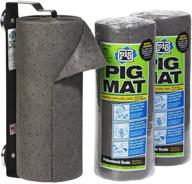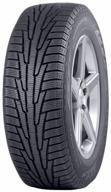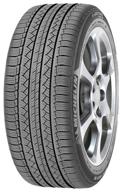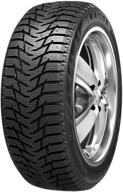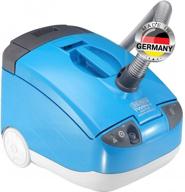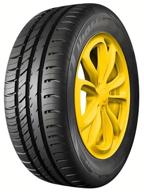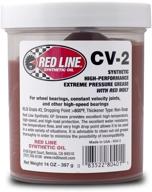Choosing the Right Motorcycle Oil
Using the correct engine oil is crucial for proper motorcycle maintenance and performance. The oil lubricates internal components, cleans deposits, and helps dissipate heat. With so many oil options on the market, choosing the right one can get confusing. This guide will walk you through the key factors to consider when selecting motorcycle oil.
Oil Types
There are three main oil types for motorcycles:
- Conventional - Made from crude oil with standard additives. Affordable option suitable for many bikes.
- Synthetic - Manufactured using refined petroleum components. Improved performance and protection.
- Synthetic Blend - Mix of conventional and synthetic oils. Balances cost and benefits.
Viscosity Grade
Viscosity refers to an oil's resistance to flow. Thicker oils have higher viscosity grades. Check your owner's manual for the recommended viscosity.
| Grade | Temperature Range |
|---|---|
| 0W, 5W, 10W | Colder temperatures |
| 20W, 25W | Moderate temperatures |
| 15W-40, 20W-50 | Hotter temperatures |
Using the wrong viscosity can lead to increased friction and wear. Multigrade oils (10W-40, 15W-50) flow well in both cold and hot conditions.
Motorcycle Type
Some motorcycles have specific oil requirements:
- Sportbikes - Synthetic or synthetic blend to withstand high RPMs.
- Cruisers - Conventional oil is often suitable for cruising speeds.
- Off-road - Look for "energy conserving" rating to reduce clutch slippage.
Additive Packages
Many oils contain additives to further protect your motorcycle:
- Detergents - Neutralize acids and prevent deposit buildup.
- Dispersants - Suspend contaminants so they can be filtered out.
- Anti-wear - Create protective barrier between moving parts.
- Corrosion inhibitors - Protect metal components from rust and oxidation.
Premium synthetic oils generally have more robust additive packages than conventional oils.
Other Considerations
A few other tips for choosing motorcycle oil:
- Consult your owner's manual for specific recommendations.
- Stick with major trusted brands like Shell, Castrol, or Motul.
- Check the API rating - "SJ" or higher meets modern standards.
- Change oil more frequently for high-performance bikes.
With the right oil, you can optimize your motorcycle's performance and ensure its engine stays protected. Selecting oil with the proper viscosity, additives, and approvals keeps your bike running smoothly mile after mile.
Keeping Your Motorcycle Chain Lubricated
Properly lubricating your motorcycle's chain is essential maintenance. Chain lube reduces friction and wear, protects against corrosion, and helps expel dirt and debris. With frequent use, chains can quickly become dry and start to deteriorate. Use these tips to keep your chain in top condition.
When to Lube
As a general rule, you should lube your chain:
- Every 300-500 miles
- After riding in the rain or on wet roads
- If the chain appears dry or starts to squeak
For high-mileage riders or off-road use, lube more frequently. Regular chain lubrication after every ride or weekly helps prevent premature wear.
Lubricant Types
Three main lubricant options exist:
- Wax-based - Dry lubes that maintain cleanliness. Reapply often.
- Grease-based - Thick wet lubes that stick well. Attract more dirt.
- Synthetic lubes - Offer wet lubrication without excessive fling-off.
Wax lubes work best in dry conditions, while grease lubes perform better in wet environments. Synthetic blends provide the best of both worlds.
Top products in 🛢️ Motorcycle Fluids & Maintenance
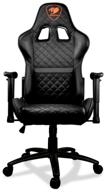

34 Review



11 Review

How to Lube the Chain
- Clean the chain first with a degreaser to remove old lubricant and grime.
- Rotate the rear wheel and apply lube on the inner links, pins, rollers, and side plates.
- Wipe off any excess lubricant with a rag.
- Let the lube penetrate for a few minutes before riding.
Apply lube sparingly on the sides of the chain rather than the top to prevent lubricant fling-off.
Another interesting products
Other Chain Maintenance Tips
- Inspect chain slack and adjust tension as needed.
- Check chain wear using a gauge and replace at the proper interval.
- Use gear oil or a specific chain cleaner for a deep clean.
- Never use WD-40 or penetrants as lubricants.
With o-ring and sealed chains, focus lube application on the outside. Avoid forcing lube inside which can break internal seals.
Benefits of Proper Lubrication
- Extends chain life
- Reduces friction and drag
- Prevents rust and corrosion
- Lessens noise
- Avoids loose/damaged rivets
Keep your motorcycle chain well-maintained with routine cleaning and lubrication. Your chain will reward you with smooth performance for thousands of miles.
Checking and Replacing Brake Fluid
Over time, motorcycle brake fluid can become contaminated and lose effectiveness. Checking and replacing fluid regularly helps ensure safe braking performance. Follow these steps and guidelines for brake system maintenance.
Check Fluid Levels
Start by verifying brake fluid levels in the master cylinders. Look for the "Full" and "Low" markings on reservoirs. If the level is low:
- Clean reservoir cap before removing to prevent contamination.
- Top off using fresh, new DOT 4 brake fluid to the proper level.
- Inspect brake pads/discs and system for any leaks.
Low fluid indicates possible leaks, worn pads, or issues with hydraulics. Check closely for signs of problems.
Fluid Change Intervals
Replace brake fluid at least every 2 years or when:
- Fluid appears dark, contaminated, or has debris.
- Braking performance seems soft or spongy.
- Brake components have been disassembled and rebuilt.
High-performance bikes may need more frequent changes such as yearly. Use manufacturer guidelines.
Flushing Procedure
A complete fluid flush is recommended when changing fluid. The process:
- Start with front brake and remove fluid from reservoir.
- Refill with new fluid while bleeding air from caliper/lines.
- Repeat process for rear brake system.
- Test braking and check for leaks.
Proper bleeding removes air, moisture, and old fluid from the system.
Fluid Recommendations
Always use fresh DOT 4 fluid from a sealed container. Avoid DOT 5 fluid in most motorcycles. Key fluid properties:
- High boiling point (at least 400°F/204°C)
- Excellent viscosity characteristics
- Resists absorption of moisture
DOT 4 has superior viscosity and wet boiling points for motorcycle use. Do not mix fluid types.
Warning Signs of Issues
Watch for these potential problems and service brake system if found:
- Spongy/soft brake lever or pedal
- Loss of braking power
- Excessive lever or pedal travel
- Brake dragging or pull
- Fluid leaks in system
Contaminated or improperly bled systems can create safety hazards. Address problems immediately.
With routine fluid checks and changes, you can optimize braking performance and motorcycle safety. Proper brake maintenance provides peace of mind on every ride.
Cleaning the Air Filter for Optimal Performance
A clogged, dirty air filter restricts airflow to the engine and decreases motorcycle performance. Regular cleaning and replacement of the air filter enables proper breathing and protects engine components.
Types of Air Filters
Motorcycles use several air filter types:
- Paper filters - Disposable and require replacement.
- Foam filters - Can be cleaned and re-oiled.
- Cotton gauze - Often oiled and needs periodic cleaning.
Check your owner’s manual to identify your filter type and any special instructions.
When to Clean/Replace Filter
Inspect and clean air filters at the intervals below or more often with frequent riding:
- Paper filters - Replace every 10,000-15,000 miles.
- Foam filters - Clean and re-oil every 1,000-3,000 miles.
- Cotton gauze filters - Clean every 500-1,000 miles.
Replace paper filters sooner if torn or damaged. Visually check foam and cotton filters between changes.
Cleaning Procedure
Use these steps to properly clean reusable air filters:
- Remove filter from airbox.
- Use soap and water to clean foam filters.
- Spray cotton gauze filters with solvent and let dry.
- Rinse filters thoroughly and dry completely.
- Re-oil foam and cotton filters with filter oil.
- Reinstall filter, checking condition of airbox.
Avoid using compressed air, which can damage filters. Change paper filters instead of cleaning.
Signs of Clogged Filter
Watch for these symptoms of a dirty air filter:
- Reduced throttle response
- Lack of high-RPM power
- Backfiring or misfiring
- Increased fuel consumption
- Engine overheating
Very dirty filters allow abrasive particles into the engine, causing rapid wear.
Importance of Air Filter Maintenance
Proper air filter care provides these benefits:
- Improves horsepower and acceleration
- Enhances engine efficiency
- Increases fuel mileage
- Lowers emissions
- Protects engine from contaminants
Make air filter checks and changes part of your regular maintenance routine. Your bike's performance depends on ample airflow to the engine.
How to use your Amazon Prime to buy "Motorcycle Fluids & Maintenance"
Amazon Prime provides fast, free shipping on millions of items, making it a convenient way to order motorcycle fluids and maintenance supplies. Here are some tips for Prime members looking to stock up on essentials for their bike.
Search for Qualifying Items
When logged into your Prime account, look for the "Prime Eligible" tag on product listings. This identifies items that qualify for Prime benefits like free 2-day shipping. Search for specific motorcycle fluids using terms like "motorcycle oil," "brake fluid," or "chain lube." Filter results by Prime Eligible to quickly see relevant products.
Check Order Minimums
Some motorcycle lubricants and additives may have minimum order sizes to receive free Prime shipping. Make sure your cart meets any order minimums before checkout. Consider combining your fluids purchase with other Prime eligible items you may need to hit the minimum.
Compare Brands and Prices
Browse and compare different motorcycle fluid brands carried on Amazon. Look at product reviews and ratings to verify quality. Prime members can access discounts and deals through Amazon Coupons to help find the lowest prices.
Use Subscription Orders
For products used frequently like oil and filters, consider setting up a subscription order. This allows periodic automatic reordering so you never run out. Amazon offers discounts on select subscription items. The frequency can be adjusted as needed.
Look for Free One-Day Delivery
Certain areas qualify for Prime one-day shipping on qualifying orders over $35. Check if your location is eligible and place orders early to get fluids and filters even faster.
With its massive selection and fast shipping, Amazon Prime helps make picking up motorcycle maintenance supplies quick and hassle-free. Keep your bike in top condition without leaving the garage.
Keep Your Motorcycle Running Smoothly With These Maintenance Products
- Find the best motorcycle oil for your bike
- Keep your brakes in top condition with high-quality brake fluid
- Protect your engine with top-rated motorcycle filters
- Maintain your motorcycle's performance with regular oil changes
- Ensure your motorcycle runs smoothly with proper chain maintenance
- Keep your motorcycle windshield clear with high-quality wiper blades





